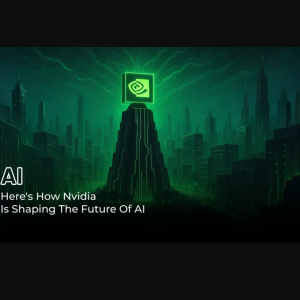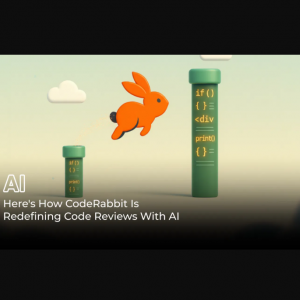Top Automation Trends in 2026 What’s Next for Business & Technology
Automation is racing ahead but 2026 marks a turning point: no longer just task‑level automation, but intelligent, adaptive, end-to-end automation systems that reshape how organizations operate. Below are the key trends defining this new era.
From RPA → Intelligent Process Automation (IPA) & “Hyper automation”
Traditional Robotic Process Automation (RPA), which automates fixed, rule-based tasks, is evolving into IPA systems that embed AI (machine learning, natural language processing, computer vision) to handle complexity, exceptions, and unstructured data. This shift means automation can now cover workflows that involve emails, scanned documents, PDFs, varied formats not just neat forms and fixed templates. In practice: tasks like invoice processing, document classification, expense approvals, and data extraction that earlier needed human intervention are increasingly automated end-to-end boosting speed, lowering errors.
The Rise of Agentic AI & Autonomous Workflow Agents
2026 is seeing widespread adoption of agent‑style AI not mere chatbots, but intelligent agents that can reason, plan, and execute complex, multi-step processes across systems. These agents can coordinate across departments, for instance onboarding a customer end-to-end: collecting documents, verifying details, updating systems, sending approvals with minimal human involvement. The promise: a “digital workforce” that operates 24/7, scales with demand, and handles not just rote tasks but process logic, exceptions, and adaptive decision-making.
AI-Driven Analytics & Predictive/Prescriptive Automation
Beyond automating tasks, 2026’s automation systems increasingly embed analytics predictive and prescriptive to forecast demand, identify bottlenecks, anticipate risks, and recommend actions. For example, in enterprise resource planning (ERP) systems, AI-powered modules can forecast demand, supplier risk, cash flow, and help plan procurement or production accordingly. This transforms automation from reactive task execution to proactive decision support helping businesses stay agile, anticipate change, and optimize resources.
Read More @ https://www.techdogs.com/td-articles/techno-trends/top-automation-trends
End‑to‑End Business Automation: ERP, Finance, HR, Supply Chain
Automation is no longer limited to isolated tasks it's increasingly built into full business processes. Modern ERP platforms offer intelligent automation across functions: accounting, procurement, supply chain, compliance, reporting. Finance processes: automated invoice‑matching, expense approvals, forecasting, regulatory reporting; HR: automated onboarding, payroll, employee data management; supply chain: inventory updates, procurement workflows, demand forecasting. The result: streamlined operations, faster cycle times, fewer manual handoffs, and much-reduced administrative overhead.
Automation Democratization: Low-Code/No-Code + RPA-as-Service (RaaS)
Tools are emerging that let non-technical users build and deploy automation drag-and-drop platforms, low-code/no-code automation, visual workflow designers. This lowers barriers for small teams and workgroups to adopt automation. Meanwhile, cloud‑native RPA and RPA-as-a-Service (RaaS) models allow organizations to scale automation without heavy upfront investment making it accessible to businesses of all sizes. These democratized tools accelerate diffusion of automation beyond large enterprises into SMEs, startups, even departmental workflows.
Continuous Optimization: Process Mining + Adaptive Automation
Rather than automating blindly, organizations are increasingly using Process Mining: analyzing logs, workflows, system usage to understand where bottlenecks, redundancies or inefficiencies lie then automating intelligently. AI‑enhanced process mining can detect patterns, suggest automation candidates, and help build adaptive workflows that evolve with changing business conditions. The result: automation isn’t a one-time implementation, but a continuous optimization workflows get refined, automated, re‑evaluated as business context evolves.
Compliance, Risk Monitoring & Governance via Automation
As regulatory, compliance, and risk management burdens grow, 2026 sees automation applied to compliance checks, audit trails, real-time monitoring, anomaly detection, and automated reporting. This helps organizations stay compliant, reduce manual audit overhead, and respond quickly to irregularities or compliance violations critical in heavily regulated industries.
Blending Humans + Machines Hybrid Automation Models
Even as automation advances, human supervision remains essential especially for exception handling, judgment calls, strategic decisions, and oversight. The hybrid model combines AI/RPA strengths with human expertise. Hybrid automation ensures that while routine, repetitive tasks are automated, humans are freed to focus on creativity, problem-solving, innovation driving value beyond efficiency.
Business Agility & Innovation Automation as a Growth Lever
For many organizations, automation in 2026 isn't just cost-cutting it's a strategic enabler: helping launch new services, scale rapidly, respond to market changes, and unlock new revenue streams. Automation becomes part of business architecture: integrated into ERP, supply chain, finance, CRM making processes lean, data-driven, and responsive.
The Growing Marketplace & Maturation of Automation Technologies
The market for automation tools (cloud‑native RPA, AI‑powered RPA, IPA, no-code platforms) is expanding rapidly. Adoption is no longer limited to large enterprises; small and mid-sized businesses are joining in. With more players specialized tools for finance, HR, procurement, document processing automation becomes more modular, accessible, and customizable to business needs.
Read More: https://www.techdogs.com/td-articles/techno-trends/top-automation-trends
What This Means for Organizations & Professionals in 2026
Operational Efficiency + Strategic Flexibility: Organizations that adopt intelligent, end-to-end automation will gain not just lower costs, but faster turnaround, better decision‑making, and agility to respond to change.
Democratization of Automation: Even non‑technical teams can build workflows enabling widespread process improvement beyond IT or dedicated automation teams.
Need for Hybrid Skills: Professionals will need to adapt focusing less on repetitive tasks, more on oversight, exception handling, process design, data governance, and strategic thinking.
Governance, Compliance & Trust: As automation handles critical processes and data, governance, transparency, and ethical design will matter more than ever.
Continuous Improvement Culture: Automation isn’t “set and forget”: with process mining and adaptive workflows, organizations should build a culture of continuous optimization.
About Techdogs:
Techdogs is a premier global tech media platform, delivering personalized, real-time insights through articles, case studies, videos, and live events. With a reach across 67 countries and a mission to make complex tech accessible, Techdogs empowers professionals to thrive in a rapidly evolving digital world.
Contact Us:
For more information, please visit www.techdogs.com
For Media Inquiries, Please Contact:
LinkedIn | Facebook | X | Instagram | Threads | YouTube | Pinterest











